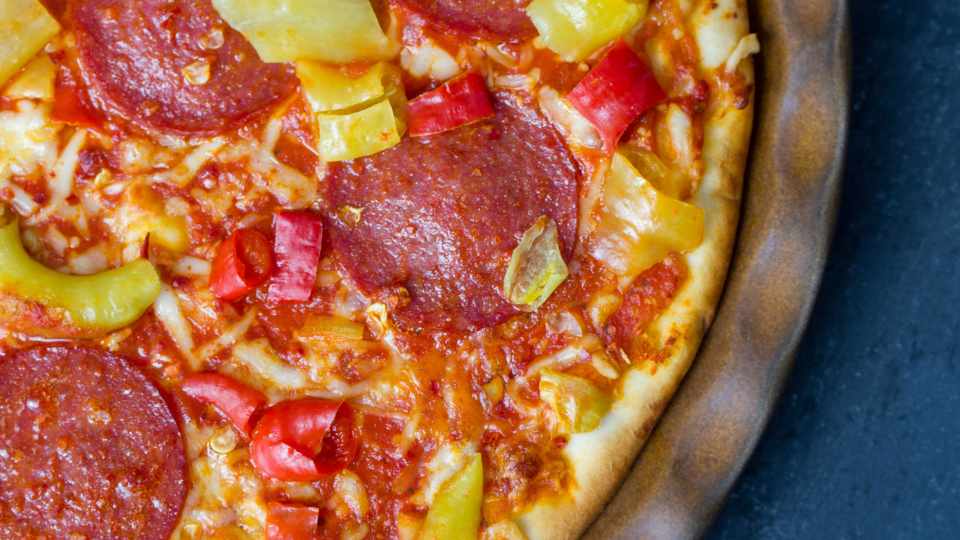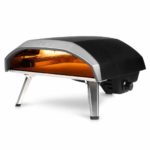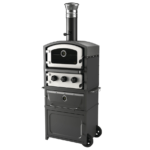How Long Does Frozen Pizza Last? (Interesting Facts)
Pizza is an all-time favourite. While you can’t beat a hot and fresh slice, frozen pizza still remains one of the ultimate convenience foods.
But what’s the shelf life of frozen pizza? How long can it really last in your freezer before its quality threatens to suffer?
That’s what we aim to answer with this ultimate guide today. Let’s get started.
How Long Does Frozen Pizza Last?
In general, frozen pizza can typically last for up to 18 months in a freezer, while leftovers should be consumed within 1 to 2 months.
General Shelf Life Guidelines: 18 Months
The shelf life of frozen pizza depends on several factors, such as how it’s prepared, what temperature and humidity levels are used to store it in the freezer, and how long its ingredients remain fresh.
On average, most frozen pizzas can stay safe to eat for up to 18 months when stored properly.
It’s important that you store your frozen pizza in a deep-freeze type refrigerator at 0°F or below — higher temperatures will speed up spoilage rather than preserving longevity.
Properly double wrapping with plastic wrap or aluminium foil prevents air from reaching the pizza and poses a risk of freezer burn which negatively affects taste and texture.
Labelling each container also allows optimal organisation so cross-contamination doesn’t occur from other foods in the freezer.
Freezing Leftovers: 1 To 2 Months
Frozen pizza, like other frozen foods and leftovers, can maintain its best quality for up to 1 to 2 months. Freezing food is an effective way of preserving it so that it does not spoil quickly and is safe for consumption at a later date.
You should also pay attention to freezer temperature when handling any kind of frozen food as fluctuating temperatures cause condensation which affects nutritional content and texture over time.
Additionally, extra care must be taken in freezing items such as pizza as leaving them exposed in the freezer hastens their expiration date due to cold air rapidly drying out product surfaces.
To prevent this problem from occurring, freeze leftover pizzas by double wrapping them using plastic wrap or vacuumed packaging with labels clearly identifying what they are and when they were saved.
You can also use aluminium foil but it can taint the flavour of some items if stored too long even with tight seals surrounding each item.
Importance Of Freezer Temperature And Storage Guidance

It’s important to note that while freezing food keeps it safe for a much longer time, the recommended shelf life of frozen pizzas is 18 months.
This means freezers must be kept at the right temperature which is typically between -18°C to -20°C according to the Food Standards Agency (FSA). If left too long, food can start losing its nutritional value and texture due to changes such as freezer burn which affects flavour, making it unappetizing or unsafe over time.
In addition, labelling and organising your fridge/freezer will help maintain the product for extended periods without any risk of confusion about the products’ expiry dates.
Keeping comprehensive records on stored items and products’ use-by dates also reduces waste from accidentally throwing out expired or nearly expired food unnecessarily.
Tips For Properly Freezing And Storing Frozen Pizza
Double Wrapping Techniques Using Plastic, Aluminium Foil Or Vacuumed Packaging
Double wrapping techniques are an effective way to preserve frozen pizza.
Firstly, it’s important to wrap the pizza slices or the entire pizza with plastic wrap in order for them to be properly sealed and protected against air exposure and freezer burn. This layer of wrapping should be tightly applied so as not to allow any air pockets and ensure a tight seal.
Then, adding a second layer of protection is advisable with aluminium foil which provides an additional protective barrier from the external environment. It helps lock the freshness in while keeping harmful elements out.
Finally, those looking for more assurance when it comes to food preservation can try vacuumed packaging as this allows all oxygen present inside their package storage container, such as Tupperware or zip-lock bags, to be eliminated resulting in extended shelf life compared to other forms of packaging.
Labelling And Organising Storage Space Effectively
Properly labelling and organising storage space for frozen pizza is an important part of safely enjoying this treat. When looking for easy-to-find food in the freezer, it’s often hard to determine what something is and when it was stored.
Without proper labelling or organisation, users can forget about their food altogether leading them to not use it before its expiration date! To prevent this from happening, clear labels should be applied that list both item names and dates they were stored within the freezer.
Grouping similar items together also helps eliminate a long search for desired foods as well as reduces confusion caused by a cluttered physical space.
Businesses should take appropriate measures such as providing employees with instructions on how to label and organise items as soon as they enter the freezer.
Labels help keep track of all products in bulk-frozen batches while grouping optimizes viewership making locating specific products easier than ever before! Clearly labelled packages also protect against food waste caused by expired products no longer being safe for consumption; meaning more money saved down the line!
Reheating And Cooking Instructions For Safe Consumption
Achieving the best flavours and texture in a frozen pizza starts with reheating and cooking instructions that ensure the food is safe to eat. Before consuming a frozen pizza, it should always be heated thoroughly.
To do this safely, place the pizza on an oven tray and heat it in an oven preheated to 200°C (392°F). Alternatively, heat for around 10-13 minutes on medium power in a microwave oven following the manufacturer’s instructions.
Relying on microwaves alone won’t necessarily guarantee your food has reached the necessary internal temperature of at least 70°C (158°F), so use both options for optimum results.
The reason for carefully re-heating foods like pizzas is twofold; one is to reduce any potential risk from both harmful bacteria and contamination from other unheated ingredients such as raw meat or fish toppings that could have been added before freezing if they exist.
The second important objective of thorough heating is that some foods – when not defrosted or cooked properly – may cause an allergic reaction and digestive difficulty due to proteins reconfiguring under different temperatures.
Tips For Enjoying Frozen Pizza Safely
When it comes to enjoying frozen pizza, the most important thing is safety. That means storing and heating the pizza according to manufacturer instructions as well as heeding common food hygiene practices like washing your hands before eating or handling heated containers away from children.
When storing frozen pizza, always make sure you double wrap it in either plastic wrap, or aluminium foil, or use a vacuum sealer for optimal protection from freezer burn. It’s also wise to label and organise your storage space so you can easily find what you need when hunger strikes.
Additionally, try not to store products for too long; if there are significant changes in colour or texture – then it may be best to throw the food out rather than risk consuming an expired product that could potentially cause harm.
For those times when hunger takes over and ready-made frozen meals come into play: reheat until steaming hot (this isn’t always necessary with pre-cooked pizzas).
You should ensure all ingredients are properly cooked through by standing back after heating since some microwaves don’t heat evenly and pockets of cold spots can remain even after apparent cooking is complete!
Also, remember that perishable items must never be consumed straight out of the fridge which can encourage bacterial growth on defrosted leftovers such as frozen pizza slices!
Conclusion
Frozen pizza is a great way to feed those hunger cravings without having to order takeout or cook. Understanding how to store frozen pizza correctly will make it last for 18 months, sometimes longer depending on its initial quality and the temperature of your freezer.
It’s recommended you double-wrap any leftovers that you plan on freezing in plastic, foil, or vacuumed packaging for best results with maximum freshness retention. Reheating instructions are crucial to ensure safety as well as keeping the taste of your frozen meal at its best.






